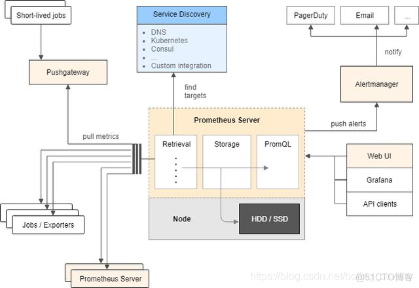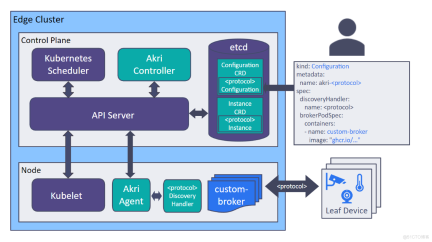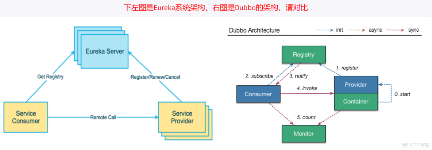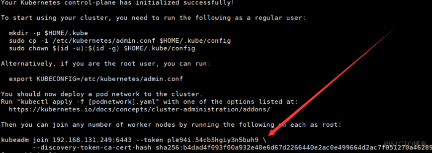不管是测试还是研发,工作中总有遇到各种各样的问题。比如,你有没有遇到过在数据库中执行某个SQL,却一直不返回结果,这时候的你是不是非常想看一下代码执行到了哪个函数?或者是数据库不响应连接,需要查看数据库当前线程的执行情况呢?
在实际生产中,获取生产系统进程堆栈比较麻烦,需要在服务端后台执行gstack命令。本期主要介绍内置gs_stack工具,可以通过函数调用的方式输出指定线程的堆栈,用于解决现网环境缺少gs_stack工具,无法获取调用栈的问题。 文章目录 内置gs_stack工具介绍 1、在客户端工具执行gs_stack([tid])函数 2、在服务器端使用gs_ctl stack –D data_dir命令 总结 内置gs_stack工具介绍 在openGauss的很多客户场景中,gdb、gstack等工具都是无法使用的,当系统出现hang、慢等问题时,无法通过调用栈进行进一步的定位。还有一种情况就是登录客户数据库的流程非常繁杂,需要经过层层审批,这时通过gsql等工具连接数据库就相对容易一些。针对以上痛点,通过复用openGauss未使用操作系统信号,并在信号处理函数中获取调用栈的方式开发了调用栈工具,以获得服务端openGauss的调用栈。
获取调用栈主要包含两种方式,一种是通过执行SQL语句获取,另一种是通过gs_ctl工具执行命令获取~
1、在客户端工具执行gs_stack([tid])函数 使用具有monadmin或者sysadmin用户权限的用户,通过gsql或者其他工具连接数据库;
执行命令:
openGuass=# select * from gs_stack();
返回当前openGauss所有线程的调用栈: ` tid | lwtid | stack ---------------+------ +------------------------------------------------------------------ 14026731434848 | 2626 | _poll + 0x2d + | | WaitLatch0rSocket(Latch volatile*,int,int,long) + 0x29f + | | WaitLatch(Latch voatile*,int,long) + 0x2e + | | start_thread +oxc5 + | | clone + OXC5 + 140116075071232| 23864 |__poll + 0x2d + | | poll + 0x81 + | | WaitLatchOrSocket(Latch volatile*, int, int, long) + 0x6af + | | WaitLatch(Latch volatile*, int, long) + 0x2e + | | ckpt_pagewriter_sub_thread_loop() + 0x284 + | | ckpt_pagewriter_main() + 0x92e + | | int GaussDbAuxiliaryThreadMain<(knl_thread_role)46>(knl_thread_arg*) + 0x482 + | | int GaussDbThreadMain<(knl_thread_role)46>(knl_thread_arg*) + 0x854 + | | InternalThreadFunc(void*) + 0x5c + | | ThreadStarterFunc(void*) + 0xa4 + | | start_thread + 0xc5 + | | clone + 0x6d +
`
只需要查看某一个线程的调用栈时,执行命令:
openGuass=# select gs_stack(xxx);
xxx为为某个线程的thread_id,能够返回thread_id为xxx的线程的调用栈:
` gs_stack
pthread_sigmask + 0x2a + gs_signal_recover_mask(__sigset_t) + 0x17 + gs_signal_send(unsigned long, int, int) + 0x2f9 + signal_child(unsigned long, int, int) + 0x36 + get_stack_according_to_tid(unsigned long, StringInfoData*) + 0x191 + gs_stack(FunctionCallInfoData*) + 0xcb + unsigned long ExecMakeFunctionResult<false, false, true>(FuncExprState*, ExprContext*, bool*, ExprDoneCond*) + 0x554 + ExecEvalFunc(FuncExprState*, ExprContext*, bool*, ExprDoneCond*) + 0x147 + ExecTargetList(List*, ExprContext*, unsigned long*, bool*, ExprDoneCond*, ExprDoneCond*) + 0x15d + ExecProject(ProjectionInfo*, ExprDoneCond*) + 0x40f + ExecResult(ResultState*) + 0x1da + ExecResultWrap(PlanState*) + 0x18 + ExecProcNode(PlanState*) + 0xde + ExecutePlan(EState*, PlanState*, CmdType, bool, long, ScanDirection, _DestReceiver*) + 0x1a6 + standard_ExecutorRun(QueryDesc*, ScanDirection, long) + 0x3d9 + explain_ExecutorRun(QueryDesc*, ScanDirection, long) + 0x109 + ExecutorRun(QueryDesc*, ScanDirection, long) + 0x1ad + PortalRunSelect(PortalData*, bool, long, _DestReceiver*) + 0x294 + PortalRun(PortalData*, long, bool, _DestReceiver*, _DestReceiver*, char*) + 0x62e + exec_simple_query(char const*, MessageType, StringInfoData*) + 0x12b0 + PostgresMain(int, char**, char const*, char const*) + 0x2e10 + BackendRun(Port*) + 0x327 + int GaussDbThreadMain<(knl_thread_role)1>(knl_thread_arg*) + 0x5a8 + InternalThreadFunc(void*) + 0x2d + ThreadStarterFunc(void*) + 0xa4 + start_thread + 0xc5 + clone + 0x6d +
`
openGauss=# select gs_stack(140115727259392);
` gs_stack
__select + 0x33 + pg_usleep(long) + 0xa1 + pg_sleep(FunctionCallInfoData*) + 0xeb + unsigned long ExecMakeFunctionResultNoSets<false, false>(FuncExprState*, ExprContext*, bool*, ExprDoneCond*) + 0x206f + ExecEvalFunc(FuncExprState*, ExprContext*, bool*, ExprDoneCond*) + 0x622 + ExecTargetList(List*, ExprContext*, unsigned long*, bool*, ExprDoneCond*, ExprDoneCond*) + 0x45d + ExecProject(ProjectionInfo*, ExprDoneCond*) + 0xc2d + ExecResult(ResultState*) + 0x79b + ExecResultWrap(PlanState*) + 0x18 + ExecProcNode(PlanState*) + 0x2db + ExecutePlan(EState*, PlanState*, CmdType, bool, long, ScanDirection, _DestReceiver*) + 0x765 + standard_ExecutorRun(QueryDesc*, ScanDirection, long) + 0xbb5 + explain_ExecutorRun(QueryDesc*, ScanDirection, long) + 0x1f7 + ExecutorRun(QueryDesc*, ScanDirection, long) + 0x947 + PortalRunSelect(PortalData*, bool, long, _DestReceiver*) + 0x7d2 + PortalRun(PortalData*, long, bool, _DestReceiver*, _DestReceiver*, char*) + 0xe11 + exec_simple_query(char const*, MessageType, StringInfoData*) + 0x3929 + PostgresMain(int, char**, char const*, char const*) + 0x61f8 + BackendRun(Port*) + 0x64d + int GaussDbThreadMain<(knl_thread_role)1>(knl_thread_arg*) + 0x9c7 + InternalThreadFunc(void*) + 0x5c + ThreadStarterFunc(void*) + 0xa4 + start_thread + 0xc5 + clone + 0x6d +
`
2、在服务器端使用gs_ctl stack –D data_dir命令 当线程池满,无法通过gsql连接数据库的时候,可以使用gs_ctl工具执行命令获取线程调用栈:
使用集群用户登录服务器,执行命令gs_ctl stack –D data_dir,data_dir是指定gaussdb的数据目录的绝对路径:
gs_ctl stack –D /path/to/install/data/ 1 可以取gaussdb所有线程的调用栈。 `[user@euler omm]$ gs_ctl stack -D /path/to/install/data/opengauss [2022-11-03 20:17:59.288][19256][][gs_ctl]: gs_stack start: Thread 0 tid<140120252633600> lwtid<23675> __poll + 0x2d poll + 0x81 CommWaitPollParam::caller(int ()(pollfd, unsigned long, int), unsigned long) + 0xb1 int comm_socket_call<CommWaitPollParam, int ()(pollfd, unsigned long, int)>(CommWaitPollParam*, int ()(pollfd, unsigned long, int)) + 0x28 comm_poll(pollfd*, unsigned long, int) + 0x388 ServerLoop() + 0xb77 PostmasterMain(int, char**) + 0x612e main + 0xaeb __libc_start_main + 0xf5 0x55feac9a9907
Thread 1 tid<140116236076800> lwtid<23848> __poll + 0x2d poll + 0x81 WaitLatchOrSocket(Latch volatile*, int, int, long) + 0x6af SysLoggerMain(int) + 0x17c9 int GaussDbThreadMain<(knl_thread_role)17>(knl_thread_arg*) + 0x860 InternalThreadFunc(void*) + 0x5c ThreadStarterFunc(void*) + 0xa4 start_thread + 0xc5 clone + 0x6d
`
只需要查看某一个线程的调用栈时,执行命令:
gs_ctl stack –D data_dir –I xx 1 data_dir是指定gaussdb的数据目录的绝对路径,xxx指的是线程的lwpid(taskid),可以通过top –Hp的方式获取线程的lwpid, 也可以通过cat /proc/yyyy/task获取线程的lwpid 。yyyy指的是进程id,可以通过ps –ux | grep gaussdb获取。
[uesr[@euler](https://my.oschina.net/u/815041) omm]$ gs_ctl stack -D /path/to/install/data -I 23860 [2022-11-03 20:22:01.327][40608][][gs_ctl]: gs_stack start: tid<140116142843648> lwtid<23860> __poll + 0x2d poll + 0x81 WaitLatchOrSocket(Latch volatile*, int, int, long) + 0x6af WaitLatch(Latch volatile*, int, long) + 0x2e ckpt_pagewriter_sub_thread_loop() + 0x284 ckpt_pagewriter_main() + 0x92e int GaussDbAuxiliaryThreadMain<(knl_thread_role)46>(knl_thread_arg*) + 0x482 int GaussDbThreadMain<(knl_thread_role)46>(knl_thread_arg*) + 0x854 InternalThreadFunc(void*) + 0x5c ThreadStarterFunc(void*) + 0xa4 start_thread + 0xc5 clone + 0x6d
总结 通过以上我们介绍的openGauss的gs_stack功能,我们可以很方便地定位某个openGauss线程正在做的事情,并可以根据这些函数调用情况判断当前openGauss任务是否出现了问题,以及发现性能瓶颈。后续,我们将会进一步在这个功能上进行演进,不断增强openGauss的核心竞争力。








